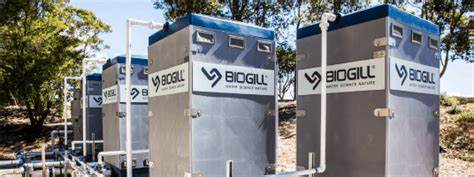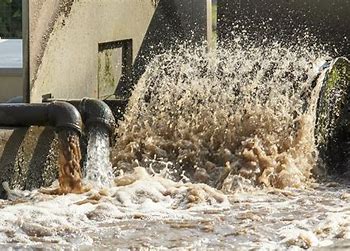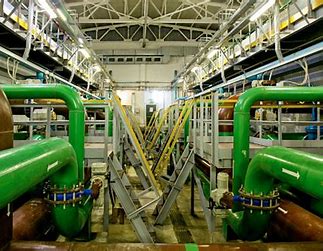
Introduction
Wastewater treatment plays a crucial role in society by ensuring the safe disposal and management of wastewater. This article aims to explore innovations in wastewater treatment and their importance in addressing the growing environmental challenges. By highlighting the relevance of discussing these innovations, this article sets out to provide a comprehensive understanding of the advancements in this field.
Historical Background
The development of wastewater treatment has undergone significant evolution over time. Early civilizations recognized the need to remove pollutants from wastewater, leading to the advent of basic treatment methods such as sedimentation and filtration. As industrialization took hold, the need for more sophisticated treatment processes became evident.
Breakthroughs in wastewater treatment occurred throughout history. The introduction of biological treatment in the 19th century marked a significant milestone. This method utilized microorganisms to break down organic matter in wastewater. Further advancements, such as the development of activated sludge processes and the use of chemical coagulants, revolutionized wastewater treatment in the early 20th century.
Key Concepts and Definitions
To understand wastewater treatment, it is essential to define key terms and concepts. Wastewater refers to any water that has been used and contains impurities. It can originate from domestic, industrial, or agricultural activities. The characteristics of wastewater vary depending on its source, including chemical composition, biological content, and physical properties.
The primary objectives of wastewater treatment are to remove pollutants and contaminants, reduce the risk of waterborne diseases, and protect the environment. Treatment processes aim to eliminate or reduce the levels of organic matter, nutrients, heavy metals, and pathogens present in wastewater.
Main Discussion Points
Point: Emerging Technologies
Emerging technologies are transforming wastewater treatment practices. Membrane bioreactors (MBRs) combine biological treatment with membrane filtration, providing a compact and efficient solution. Anaerobic digestion utilizes microorganisms to break down organic matter in the absence of oxygen, producing biogas as a valuable byproduct. Advanced oxidation processes (AOPs) employ chemical reactions to remove persistent organic pollutants from wastewater.

These emerging technologies offer numerous benefits, such as increased treatment efficiency, reduced footprint, and improved water quality. However, they also have limitations, including high capital and operational costs. Successful implementation of these technologies has been demonstrated in various applications, such as municipal wastewater treatment plants and industrial facilities.
Point: Sustainable Approaches
Sustainable practices are gaining traction in wastewater treatment. Resource recovery involves extracting valuable resources, such as energy, nutrients, and water, from wastewater. Energy-efficient processes, such as anaerobic digestion and the use of renewable energy sources, reduce the environmental impact of wastewater treatment. Circular economy concepts promote the reuse and recycling of wastewater, minimizing waste generation.
Case studies of sustainable wastewater treatment systems showcase their viability. For instance, some facilities have implemented technologies to recover energy from wastewater and produce biogas for electricity generation. These innovative approaches present opportunities to conserve resources and reduce the carbon footprint of wastewater treatment.
Point: Water Reuse and Desalination
The importance of water reuse and desalination is growing in wastewater treatment. With increasing water scarcity, reclaiming and reusing treated wastewater is crucial for sustainable water management. Desalination processes, such as reverse osmosis and distillation, remove salt and other impurities from seawater or brackish water, making it suitable for various applications.
Successful water reuse and desalination projects have been implemented worldwide. For example, treated wastewater is used for irrigation in agriculture, industrial processes, and even drinking water supply in some regions. These projects demonstrate the potential of these technologies to address water scarcity challenges and ensure long-term water availability.

Case Studies or Examples
Real-world examples of innovative wastewater treatment projects showcase their effectiveness. One such case is the Orange County Water District’s Groundwater Replenishment System in California. This project uses advanced treatment processes, including microfiltration, reverse osmosis, and ultraviolet light disinfection, to produce high-quality water for recharging underground aquifers. The system has successfully provided a reliable and sustainable water supply source.
These case studies highlight the success stories and lessons learned from implementing innovative wastewater treatment technologies. They also underscore the positive impact of these advancements on various industries and regions, emphasizing the need for continued innovation and adoption.
Current Trends or Developments
Current trends in wastewater treatment research and development focus on improving efficiency and optimizing processes. Data analytics, artificial intelligence, and automation play significant roles in enhancing the performance of treatment plants. These technologies enable real-time monitoring, predictive maintenance, and process optimization, resulting in reduced costs and improved treatment outcomes.
Recent research findings explore innovative approaches to wastewater treatment. Studies have investigated the use of nanotechnology, advanced sensors, and novel materials to enhance pollutant removal and resource recovery. These developments offer promising solutions for addressing emerging contaminants and improving overall treatment efficiency.
Challenges or Controversies
Despite the advancements in wastewater treatment, several challenges persist. Implementing innovative technologies can be financially demanding, making it difficult for some communities or industries to adopt them. Regulatory barriers, such as stringent discharge limits and complex permitting processes, can also hinder the widespread adoption of these technologies.
Controversies and differing viewpoints surround certain technologies or approaches. For example, the use of chemicals in some treatment processes raises concerns about potential environmental impacts. Balancing the need for effective treatment with minimizing potential risks requires careful consideration and ongoing research.

Future Outlook
The future of wastewater treatment holds promising advancements. Technology will continue to play a crucial role in optimizing treatment processes and reducing environmental impacts. Advancements in nanotechnology, decentralized treatment systems, and smart infrastructure hold potential for achieving higher treatment efficiencies and resource recovery.
Policy and regulation will shape the future of wastewater treatment. Governments and international organizations are increasingly recognizing the importance of sustainable water management and are implementing policies to encourage innovation and adoption of advanced treatment technologies. Collaboration between researchers, policymakers, and industry stakeholders will be vital in driving progress in this field.
Conclusion
Innovations in wastewater treatment are essential for addressing environmental challenges and ensuring the sustainable management of water resources. Emerging technologies, sustainable approaches, and water reuse are transforming the field. Real-world case studies demonstrate the success of these innovations, while ongoing research and development promise further advancements. Overcoming challenges and shaping future policies will be crucial in realizing the full potential of wastewater treatment.






